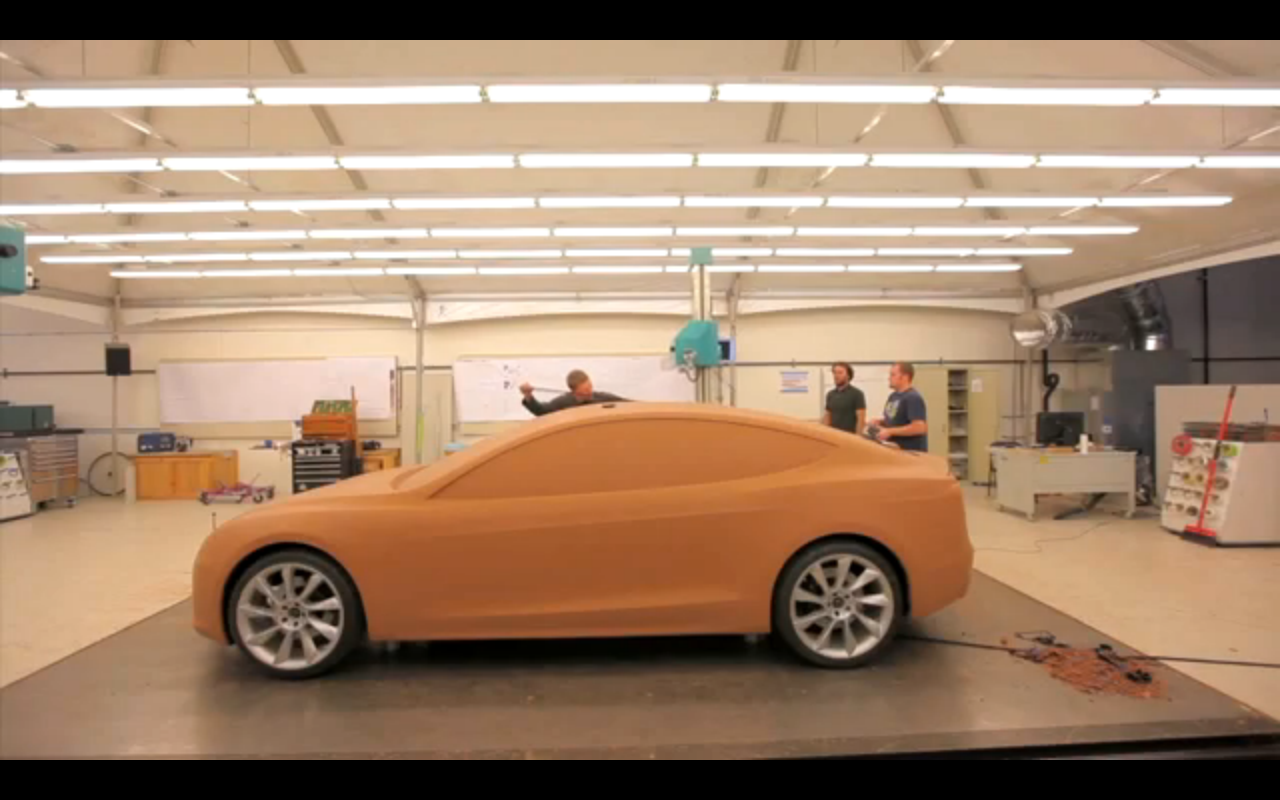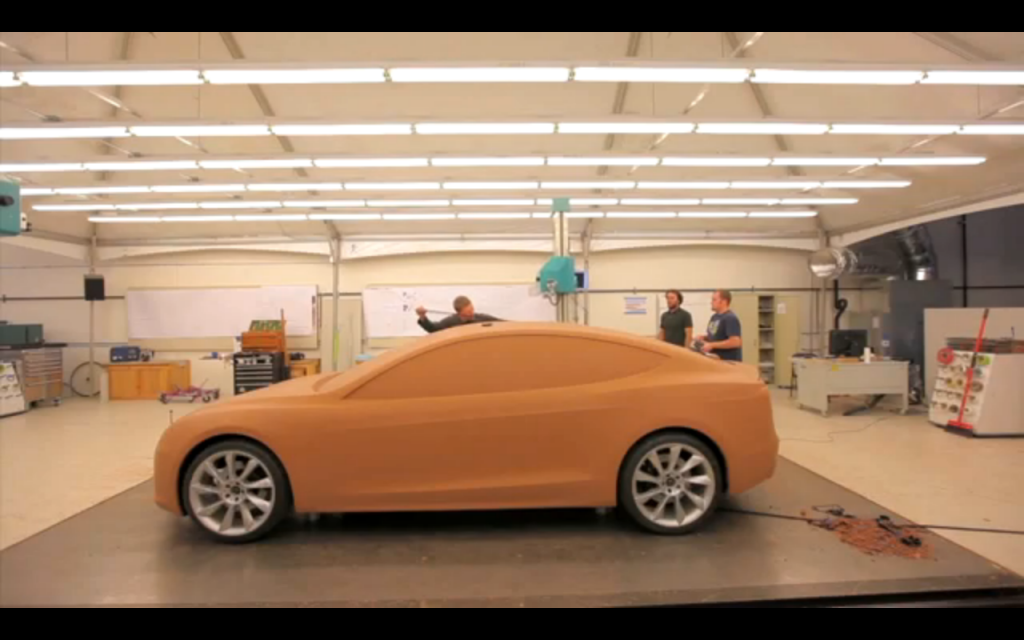News
Tesla Model 3 – 300 Mile Range, BMW M3 Performance
A new reports says the Tesla Model III will have 300 miles of range and the performance of a BMW M3. If true, it will turn the auto business upside down.

A new report in Britain’s Autocar claims the Tesla Model III will have a range of 300 miles and performance equal to the vaunted BMW M3, which romps to 62 mph in 4.1 seconds. If Tesla can do all that in a $35,000 car, it will need to build a lot of new factories just to keep up with demand.
But before we get too excited, let’s keep in mind that range in other countries is measured according to standards that are far more generous than what the EPA uses. So that 300 mile range may be more like 250 or even less in the US. But it’s still significantly more than what Chevrolet says it will get with its upcoming Bolt electric car.
Autocar also says the Model III will be revealed in March, 2016 at a dedicated Tesla event similar to the one for the Tesla PowerWall home battery storage system last spring and the most recent upgrades to the Model S last week. Previously, industry observers expected the unveiling to take place at next year’s Geneva auto show.Let’s review what we know about the Model III. Chris Porritt, Tesla’s vice-president of engineering, previously told Autocar: “I expect there will be very little carry-over [from the Model S]. We’ve got to be cost-effective. We can’t use aluminium for all the [small car’s] components.” This suggests that the Model III will use mostly steel in its make-up, although many of its panels may be bonded rather than riveted a la the BMW i3.
>>>>> Automakers take aim at Tesla’s Model 3
Tesla’s chief designer, Franz von Holzhausen, says the Model III will boast more distinctive styling than the relatively conventional Model S. “We will become more experimental as we develop as a brand,” he said. “Our cars need to have some personality.”
We also know that Tesla is planning to offer the Model III in several body styles. It will probably debut as a sedan, followed by wagon and SUV versions. Single and dual motor models with a variety of batteries are expected. There are even reports that Tesla wants to build a pickup truck that uses the Model III platform.
Up until now, Tesla has been in competition with the world’s top luxury sedans — the Mercedes S Class, Lexus LS, BMW 7 series and Audi A8. The Model III will play in an entirely different segment of the market, one populated by the likes of the Audi A4, BMW 3 Series, Lexus IS, Jaguar XE and Mercedes C Class.
The Model III is expected to go on sale in early 2017, assuming there is an adequate supply of batteries available from the GigaFactory outside of Reno. Rumor has it that Tesla is currently ahead of schedule which is great news. Tesla made the world wait for the Model S (although most would say the wait was worth it). The Model X has been delayed several times. Tesla does many things well, but it needs to do a better job of getting new products to market on time and on budget.
If the Model III really can run with the M3, have anything like 300 miles of range and sell for $35,000, it is going to turn the auto business upside down.
Source: Autocar
More Tesla Model 3 News

Elon Musk
Elon Musk and Tesla AI Director share insights after empty driver seat Robotaxi rides
The executives’ unoccupied tests hint at the rapid progress of Tesla’s unsupervised Robotaxi efforts.

Tesla CEO Elon Musk and AI Director Ashok Elluswamy celebrated Christmas Eve by sharing personal experiences with Robotaxi vehicles that had no safety monitor or occupant in the driver’s seat. Musk described the system’s “perfect driving” around Austin, while Elluswamy posted video from the back seat, calling it “an amazing experience.”
The executives’ unoccupied tests hint at the rapid progress of Tesla’s unsupervised Robotaxi efforts.
Elon and Ashok’s firsthand Robotaxi insights
Prior to Musk and the Tesla AI Director’s posts, sightings of unmanned Teslas navigating public roads were widely shared on social media. One such vehicle was spotted in Austin, Texas, which Elon Musk acknowleged by stating that “Testing is underway with no occupants in the car.”
Based on his Christmas Eve post, Musk seemed to have tested an unmanned Tesla himself. “A Tesla with no safety monitor in the car and me sitting in the passenger seat took me all around Austin on Sunday with perfect driving,” Musk wrote in his post.
Elluswamy responded with a 2-minute video showing himself in the rear of an unmanned Tesla. The video featured the vehicle’s empty front seats, as well as its smooth handling through real-world traffic. He captioned his video with the words, “It’s an amazing experience!”
Towards Unsupervised operations
During an xAI Hackathon earlier this month, Elon Musk mentioned that Tesla owed be removing Safety Monitors from its Robotaxis in Austin in just three weeks. “Unsupervised is pretty much solved at this point. So there will be Tesla Robotaxis operating in Austin with no one in them. Not even anyone in the passenger seat in about three weeks,” he said. Musk echoed similar estimates at the 2025 Annual Shareholder Meeting and the Q3 2025 earnings call.
Considering the insights that were posted Musk and Elluswamy, it does appear that Tesla is working hard towards operating its Robotaxis with no safety monitors. This is quite impressive considering that the service was launched just earlier this year.
Elon Musk
Starlink passes 9 million active customers just weeks after hitting 8 million
The milestone highlights the accelerating growth of Starlink, which has now been adding over 20,000 new users per day.

SpaceX’s Starlink satellite internet service has continued its rapid global expansion, surpassing 9 million active customers just weeks after crossing the 8 million mark.
The milestone highlights the accelerating growth of Starlink, which has now been adding over 20,000 new users per day.
9 million customers
In a post on X, SpaceX stated that Starlink now serves over 9 million active users across 155 countries, territories, and markets. The company reached 8 million customers in early November, meaning it added roughly 1 million subscribers in under seven weeks, or about 21,275 new users on average per day.
“Starlink is connecting more than 9M active customers with high-speed internet across 155 countries, territories, and many other markets,” Starlink wrote in a post on its official X account. SpaceX President Gwynne Shotwell also celebrated the milestone on X. “A huge thank you to all of our customers and congrats to the Starlink team for such an incredible product,” she wrote.
That growth rate reflects both rising demand for broadband in underserved regions and Starlink’s expanding satellite constellation, which now includes more than 9,000 low-Earth-orbit satellites designed to deliver high-speed, low-latency internet worldwide.
Starlink’s momentum
Starlink’s momentum has been building up. SpaceX reported 4.6 million Starlink customers in December 2024, followed by 7 million by August 2025, and 8 million customers in November. Independent data also suggests Starlink usage is rising sharply, with Cloudflare reporting that global web traffic from Starlink users more than doubled in 2025, as noted in an Insider report.
Starlink’s momentum is increasingly tied to SpaceX’s broader financial outlook. Elon Musk has said the satellite network is “by far” the company’s largest revenue driver, and reports suggest SpaceX may be positioning itself for an initial public offering as soon as next year, with valuations estimated as high as $1.5 trillion. Musk has also suggested in the past that Starlink could have its own IPO in the future.
News
NVIDIA Director of Robotics: Tesla FSD v14 is the first AI to pass the “Physical Turing Test”
After testing FSD v14, Fan stated that his experience with FSD felt magical at first, but it soon started to feel like a routine.

NVIDIA Director of Robotics Jim Fan has praised Tesla’s Full Self-Driving (Supervised) v14 as the first AI to pass what he described as a “Physical Turing Test.”
After testing FSD v14, Fan stated that his experience with FSD felt magical at first, but it soon started to feel like a routine. And just like smartphones today, removing it now would “actively hurt.”
Jim Fan’s hands-on FSD v14 impressions
Fan, a leading researcher in embodied AI who is currently solving Physical AI at NVIDIA and spearheading the company’s Project GR00T initiative, noted that he actually was late to the Tesla game. He was, however, one of the first to try out FSD v14.
“I was very late to own a Tesla but among the earliest to try out FSD v14. It’s perhaps the first time I experience an AI that passes the Physical Turing Test: after a long day at work, you press a button, lay back, and couldn’t tell if a neural net or a human drove you home,” Fan wrote in a post on X.
Fan added: “Despite knowing exactly how robot learning works, I still find it magical watching the steering wheel turn by itself. First it feels surreal, next it becomes routine. Then, like the smartphone, taking it away actively hurts. This is how humanity gets rewired and glued to god-like technologies.”
The Physical Turing Test
The original Turing Test was conceived by Alan Turing in 1950, and it was aimed at determining if a machine could exhibit behavior that is equivalent to or indistinguishable from a human. By focusing on text-based conversations, the original Turing Test set a high bar for natural language processing and machine learning.
This test has been passed by today’s large language models. However, the capability to converse in a humanlike manner is a completely different challenge from performing real-world problem-solving or physical interactions. Thus, Fan introduced the Physical Turing Test, which challenges AI systems to demonstrate intelligence through physical actions.
Based on Fan’s comments, Tesla has demonstrated these intelligent physical actions with FSD v14. Elon Musk agreed with the NVIDIA executive, stating in a post on X that with FSD v14, “you can sense the sentience maturing.” Musk also praised Tesla AI, calling it the best “real-world AI” today.









